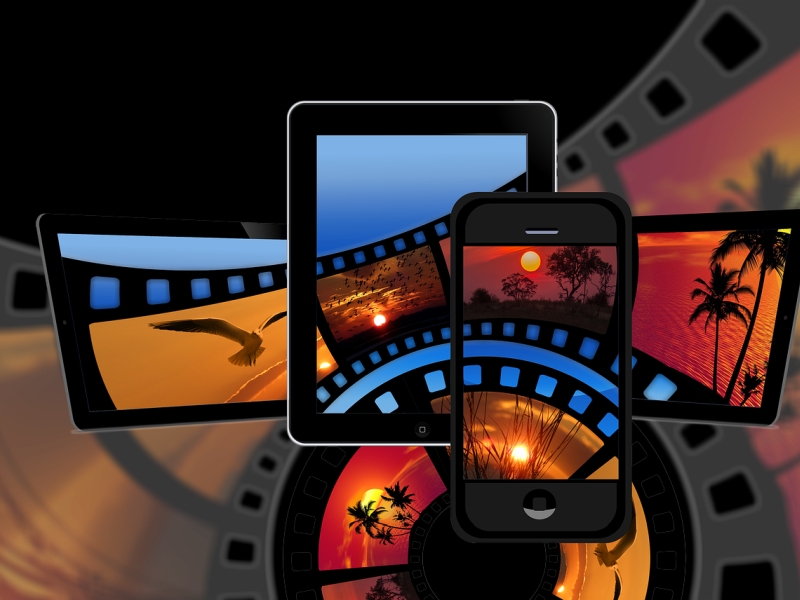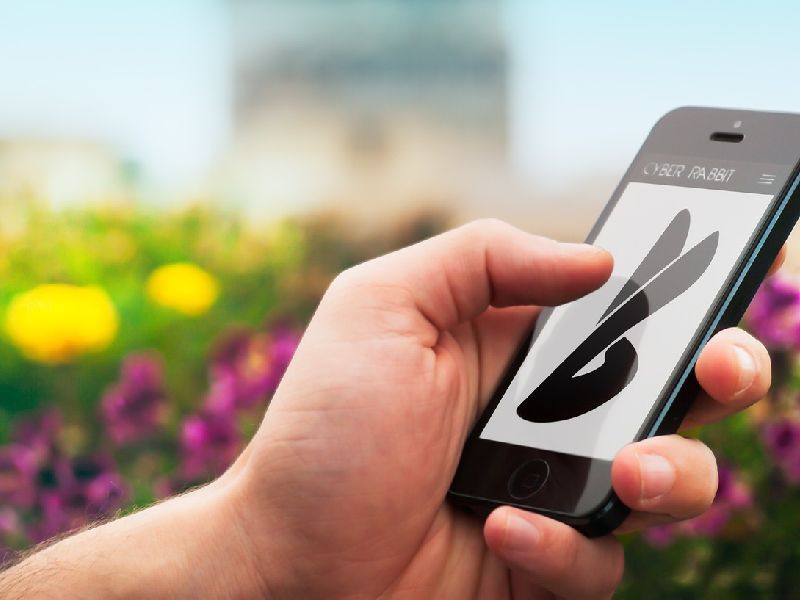Introduction
In the ever-evolving landscape of app design, animation emerges as a powerful tool for enhancing user experiences and elevating interface interactions. As technology continues to evolve, the incorporation of subtle motion into app user interfaces (UI) has become increasingly prevalent, offering designers a means to guide, inform, and delight users in ways previously unimaginable.
At the heart of this trend lies the recognition of animation as more than just eye candy; it serves as a crucial element in creating intuitive, engaging, and memorable experiences for app users. From micro-interactions that provide instant feedback to seamless transitions that guide users through complex workflows, animation has the power to transform static interfaces into dynamic, responsive environments that adapt to user actions and intentions.
Throughout this exploration, we will delve into the multifaceted role of animation in app UI design, examining its impact on user engagement, usability, and brand perception. From the subtle nuances of micro-interactions to the grand gestures of animated transitions, we will uncover the art and science behind effective animation design, providing insights and examples to inspire designers and developers alike.
But before we embark on this journey into the world of animation, let us first establish a foundational understanding of its significance in app UI design.
Understanding the Power of Animation in App UI
Animation in app UI design serves as a bridge between functionality and user engagement, enhancing the overall user experience in profound ways. By adding motion to static elements, designers can communicate information, guide users through tasks, and evoke emotional responses, ultimately creating interfaces that feel dynamic, intuitive, and responsive.
One of the key aspects of animation in app UI design is its ability to provide instant feedback to user actions. Micro-interactions, such as button presses, swipes, and taps, can be enhanced with subtle animations that confirm user inputs and communicate system responses. For example, a button that changes color or size upon being pressed provides visual feedback that reassures users that their action has been registered, enhancing the feeling of responsiveness and interactivity.
Additionally, animation can be used to guide users through complex workflows and interactions, simplifying the user experience and reducing cognitive load. Transitions between screens, menus, and content can be animated to create a sense of continuity and flow, helping users understand the spatial relationships between different interface elements. By choreographing these transitions thoughtfully, designers can create seamless experiences that feel natural and intuitive, fostering a sense of confidence and mastery in users.
Furthermore, animation can be leveraged to enhance the personality and brand identity of an app. By incorporating motion design elements that reflect the brand’s aesthetic and values, designers can create interfaces that feel cohesive and memorable. Whether it’s playful animations that delight users or subtle visual cues that reinforce brand messaging, animation can be a powerful tool for expressing the unique identity of an app and creating emotional connections with users.
In essence, animation in app UI design represents a convergence of form and function, where aesthetics and usability intersect to create experiences that are not only visually appealing but also highly functional and intuitive.
Effective Use of Animation in App UI Design
To truly harness the power of animation in app UI design, it’s essential to understand how to use it effectively to enhance the user experience without overwhelming or distracting users. Here, we’ll explore several key principles and techniques for incorporating animation into app interfaces in a way that is intuitive, engaging, and purposeful.
Case Study: Evolving Example App – Introduction to the app and its purpose:
Imagine a productivity app designed to help users manage their tasks and schedules efficiently. At its core, the app aims to streamline the process of organizing tasks, setting reminders, and tracking progress, ultimately empowering users to stay focused and productive throughout their day.
As we examine the evolution of this example app, we’ll explore how animation can be strategically used to enhance various aspects of the user experience, from navigation and feedback to branding and delight.
Using Animation to Guide User Navigation:
One of the primary functions of animation in app UI design is to guide users through the interface and help them understand how to interact with different elements. In our example app, animation can be used to highlight important features, provide visual cues, and draw attention to key actions.
For instance, when users first launch the app, they may be greeted with a subtle animation that directs their attention to the primary navigation menu. As they navigate through different sections of the app, animated transitions can guide them seamlessly from one screen to the next, creating a sense of continuity and coherence in the user experience.
Providing Visual Feedback through Animation:
In addition to guiding user navigation, animation can also be used to provide instant feedback to user actions, reinforcing the feeling of responsiveness and interactivity. For example, when users complete a task or check off an item on their to-do list, a satisfying animation can signal their progress and celebrate their accomplishments.
Similarly, when users encounter errors or issues, animations can be used to provide clear feedback and guidance on how to resolve them. Whether it’s highlighting a field that requires input or displaying a subtle error message, animation can help users understand what went wrong and how to correct it, reducing frustration and confusion.
Enhancing Brand Personality with Animation:
Beyond its functional benefits, animation can also be leveraged to enhance the personality and brand identity of an app. In our example app, animations can be designed to reflect the brand’s aesthetic and values, creating a cohesive and immersive experience that resonates with users.
For instance, if the app is targeted towards creative professionals, animations may be playful and whimsical, incorporating vibrant colors and dynamic movements to evoke a sense of creativity and inspiration. On the other hand, if the app is aimed at corporate professionals, animations may be more refined and minimalist, conveying a sense of professionalism and sophistication.
By incorporating animation that aligns with the brand’s identity, designers can create interfaces that feel authentic and memorable, fostering stronger emotional connections with users and reinforcing brand loyalty.
Creating Delightful User Experiences with Animation:
Ultimately, the goal of animation in app UI design is to create experiences that are not only functional and intuitive but also delightful and engaging. Whether it’s a subtle transition between screens or a playful animation that surprises and delights users, animation has the power to elevate the user experience and leave a lasting impression.
In our example app, animations can be used to add moments of delight and surprise throughout the user journey, making mundane tasks feel more enjoyable and rewarding. For example, when users complete a particularly challenging task or achieve a milestone, they may be rewarded with a whimsical animation or a congratulatory message, reinforcing their sense of accomplishment and motivating them to continue using the app.
By strategically incorporating animation into the user experience, designers can create interfaces that feel dynamic, responsive, and memorable, ultimately enhancing user engagement and satisfaction.
Tips for Incorporating Animation in App UI Design
While animation can significantly enhance the user experience in app interfaces, it’s essential to approach its integration thoughtfully and strategically. Here are some key tips and best practices for incorporating animation into app UI design effectively:
Start with Purpose:
When incorporating animation into app UI design, it’s crucial to begin with a clear understanding of its purpose and function. Animation should serve a specific goal, whether it’s guiding user navigation, providing feedback, or enhancing brand personality. By defining the purpose of each animation upfront, designers can ensure that their designs are purposeful and meaningful, rather than gratuitous or distracting.
Keep it Subtle:
While animation can add visual interest and engagement to app interfaces, it’s essential to keep it subtle and unobtrusive. Excessive or overly flashy animations can overwhelm users and detract from the overall user experience. Instead, focus on using animation sparingly and judiciously, incorporating it only where it enhances usability and clarity. Subtle animations that complement the user experience without drawing attention away from the primary task at hand are often the most effective.
Consistency is Key:
Consistency is crucial when incorporating animation into app UI design. Designers should establish a unified animation style and apply it consistently throughout the interface to create a cohesive and harmonious user experience. This includes using consistent timing, easing curves, and motion principles to ensure that animations feel cohesive and seamless across different screens and interactions. By maintaining consistency in animation design, designers can create interfaces that feel polished and professional, reinforcing user trust and confidence.
Test and Iterate:
Like any aspect of UI design, animation should be tested and iterated upon to ensure its effectiveness and usability. Designers should gather user feedback through usability testing and user research to understand how users perceive and interact with animations. Based on this feedback, designers can iterate on their animation designs, refining timing, motion paths, and other animation parameters to optimize the user experience. By testing and iterating on animation designs, designers can ensure that their animations are intuitive, engaging, and enjoyable for users.
By following these tips and best practices, designers can effectively incorporate animation into app UI design, enhancing the user experience and creating interfaces that are intuitive, engaging, and memorable.
Case Study: Evolving Example App – Implementation of Animation Features
Now, let’s dive into the application of animation in our example productivity app. We’ll examine how animation features have been strategically implemented to enhance various aspects of the user experience, from navigation and feedback to branding and delight.
Initial Design:
In the initial design of our example app, the interface was functional but lacked the polish and engagement that animation can bring. Users navigated through screens using static transitions, and interactions lacked the visual feedback that animation can provide.
Incorporating Animation:
To address these shortcomings, we introduced animation features designed to enhance the user experience. For instance, when users navigate between different sections of the app, we implemented animated transitions that provide smooth and seamless visual transitions, creating a sense of continuity and flow.
Additionally, we added micro-interactions throughout the app to provide instant feedback to user actions. For example, when users complete a task or mark an item as complete, a subtle animation confirms their action, reinforcing the feeling of responsiveness and interactivity.
User Feedback and Iterations:
With the animation features in place, we conducted usability testing to gather feedback from users on their experience with the app. Based on user feedback, we made iterative refinements to the animation designs, tweaking timing, easing curves, and motion paths to optimize usability and engagement.
For example, we adjusted the timing of transitions to ensure that they felt natural and intuitive, avoiding abrupt or jarring movements that could disrupt the user experience. Similarly, we fine-tuned the visual feedback animations to strike the right balance between clarity and subtlety, ensuring that they were noticeable without being distracting.
Final Design:
After several rounds of testing and iteration, we arrived at a final design that effectively incorporates animation to enhance the user experience. The interface feels dynamic and responsive, with animations that guide users through tasks, provide instant feedback, and reinforce the brand identity of the app.
Users reported feeling more engaged and immersed in the app, with animations that added a layer of polish and sophistication to the user experience. By strategically incorporating animation features and iterating based on user feedback, we were able to create an interface that not only meets the functional needs of users but also delights and engages them on a deeper level.
User Testimonial: Sarah’s Experience with the Evolved App
To provide a real-world perspective on the impact of animation in app UI design, let’s hear from Sarah, a user who has been using the evolved version of our example productivity app. Sarah’s experience offers valuable insights into how animation features have enhanced her interaction with the app and improved her overall user experience.
Sarah, a busy professional with a hectic schedule, relies heavily on productivity apps to stay organized and on track with her tasks. When she first started using the evolved version of our example app, Sarah was immediately struck by the fluidity and polish of the interface.
“The animations in this app really make a difference,” Sarah says. “Everything feels so smooth and intuitive, like the app is anticipating my actions before I even take them. It’s made managing my tasks feel almost effortless.”
Sarah highlights the impact of animated transitions in guiding her through different sections of the app. “The transitions between screens are so seamless,” she explains. “It’s like the app is guiding me through my tasks with gentle nudges and cues. It’s a small detail, but it makes a big difference in how intuitive the app feels to use.”
Sarah also appreciates the visual feedback provided by animation when she completes tasks or marks items as complete. “The subtle animations that confirm my actions give me a sense of satisfaction and accomplishment,” she says. “It’s like the app is cheering me on every step of the way, which motivates me to stay productive and focused.”
Overall, Sarah’s experience with the evolved version of our example app underscores the transformative impact of animation on user experience. By incorporating animation features that guide, inform, and delight users, designers can create interfaces that feel dynamic, responsive, and engaging.
As we conclude our exploration of the role of animation in app UI design, let’s draw inspiration from Sarah’s experience and strive to create interfaces that leverage animation to enhance the user experience in meaningful and impactful ways. With thoughtful design and strategic implementation, animation has the power to elevate app interfaces to new heights of usability, engagement, and delight.
Conclusion
In the dynamic world of app UI design, animation emerges as a powerful tool for creating interfaces that are not only functional and intuitive but also engaging and memorable. Throughout this exploration, we have delved into the multifaceted role of animation in enhancing the user experience, from guiding navigation to providing visual feedback and reinforcing brand identity.
Through a case study of our example productivity app and a user testimonial from Sarah, we have witnessed firsthand the transformative impact of animation on user engagement and satisfaction. By strategically incorporating animation features and iterating based on user feedback, designers can create interfaces that feel dynamic, responsive, and delightful to use.
As we conclude our exploration, let’s reflect on the key insights and principles that have emerged:
- Purposeful Animation: Animation should serve a clear purpose in app UI design, whether it’s guiding user navigation, providing feedback, or enhancing brand identity. By starting with a clear understanding of the purpose of each animation, designers can ensure that their designs are meaningful and impactful.
- Subtle Design: Animation should be subtle and unobtrusive, enhancing the user experience without overwhelming or distracting users. By keeping animations subtle and judicious, designers can create interfaces that feel polished and professional, reinforcing user trust and confidence.
- Consistency and Iteration: Consistency is crucial when incorporating animation into app UI design. Designers should establish a unified animation style and apply it consistently throughout the interface to create a cohesive and harmonious user experience. Additionally, designers should iterate on their animation designs based on user feedback, refining timing, motion paths, and other parameters to optimize usability and engagement.
- User-Centric Approach: Ultimately, animation should be designed with the user in mind. By prioritizing user needs and preferences, designers can create interfaces that feel intuitive, engaging, and enjoyable to use. User feedback and testing should guide the design process, ensuring that animations enhance the overall user experience.
As we continue to explore the ever-evolving landscape of app UI design, let’s draw inspiration from the transformative power of animation and strive to create interfaces that leverage animation to enhance the user experience in meaningful and impactful ways. With thoughtful design and strategic implementation, animation has the power to elevate app interfaces to new heights of usability, engagement, and delight.











